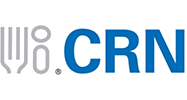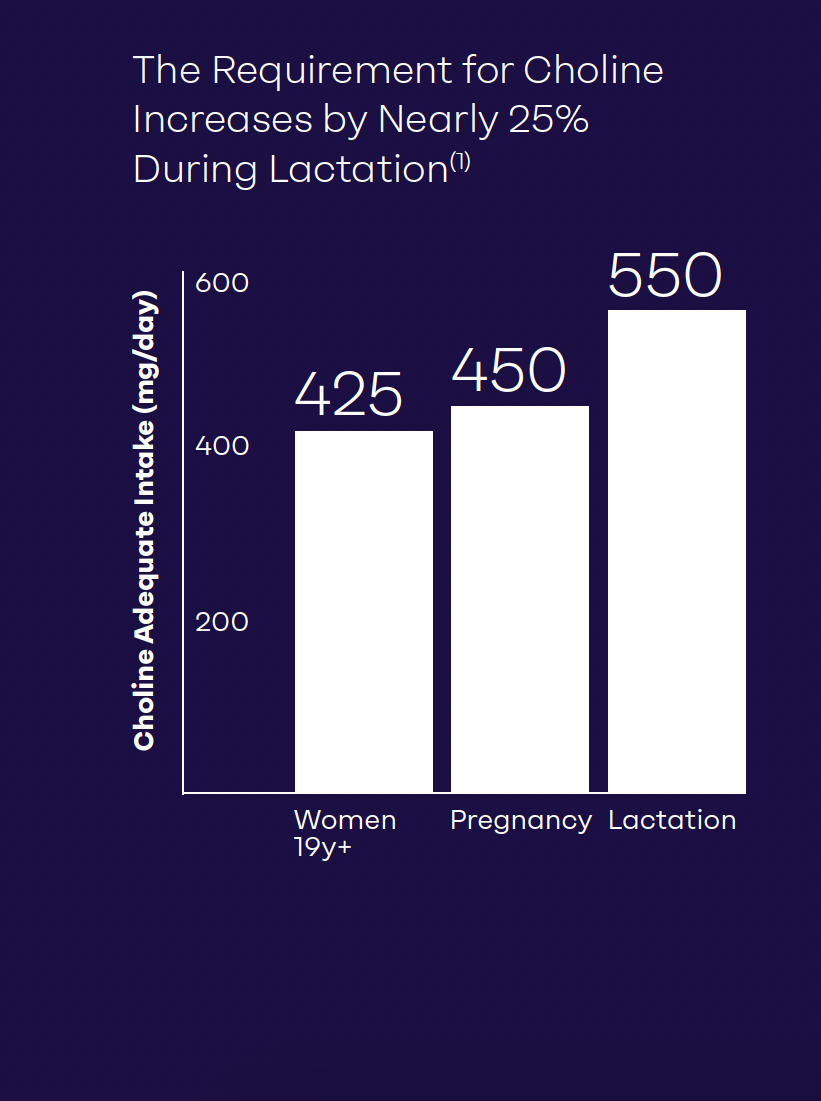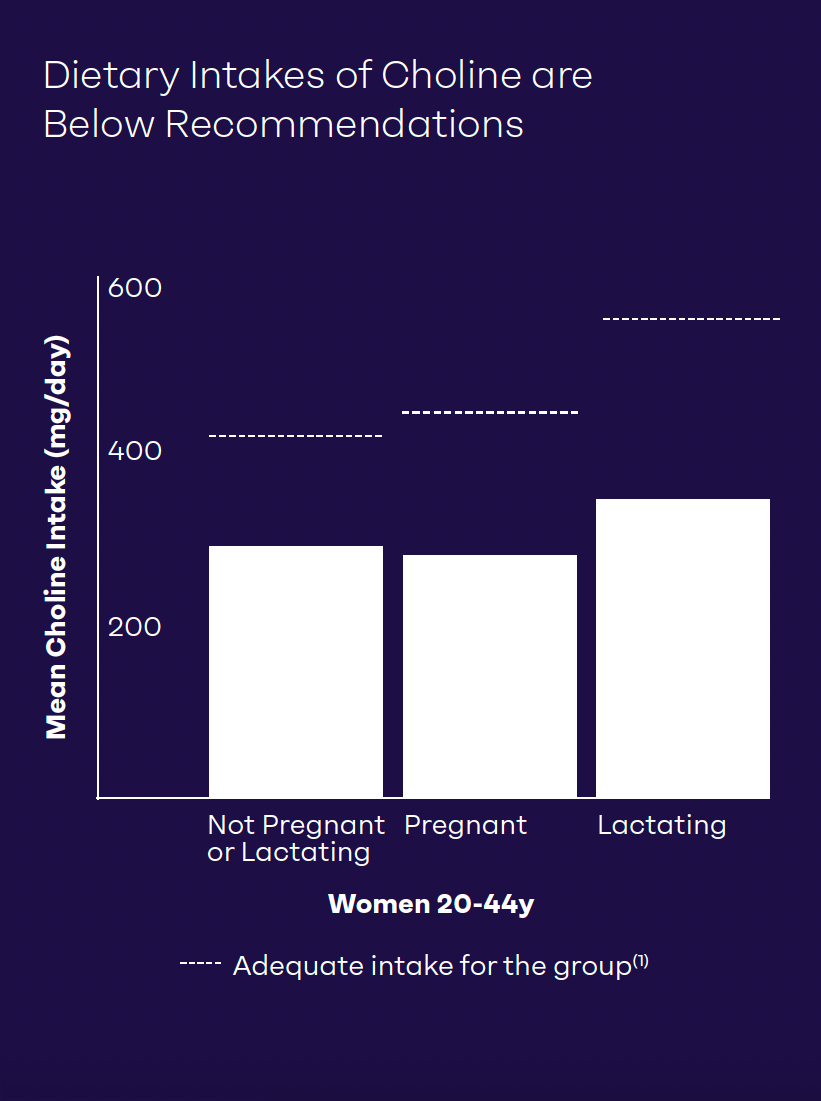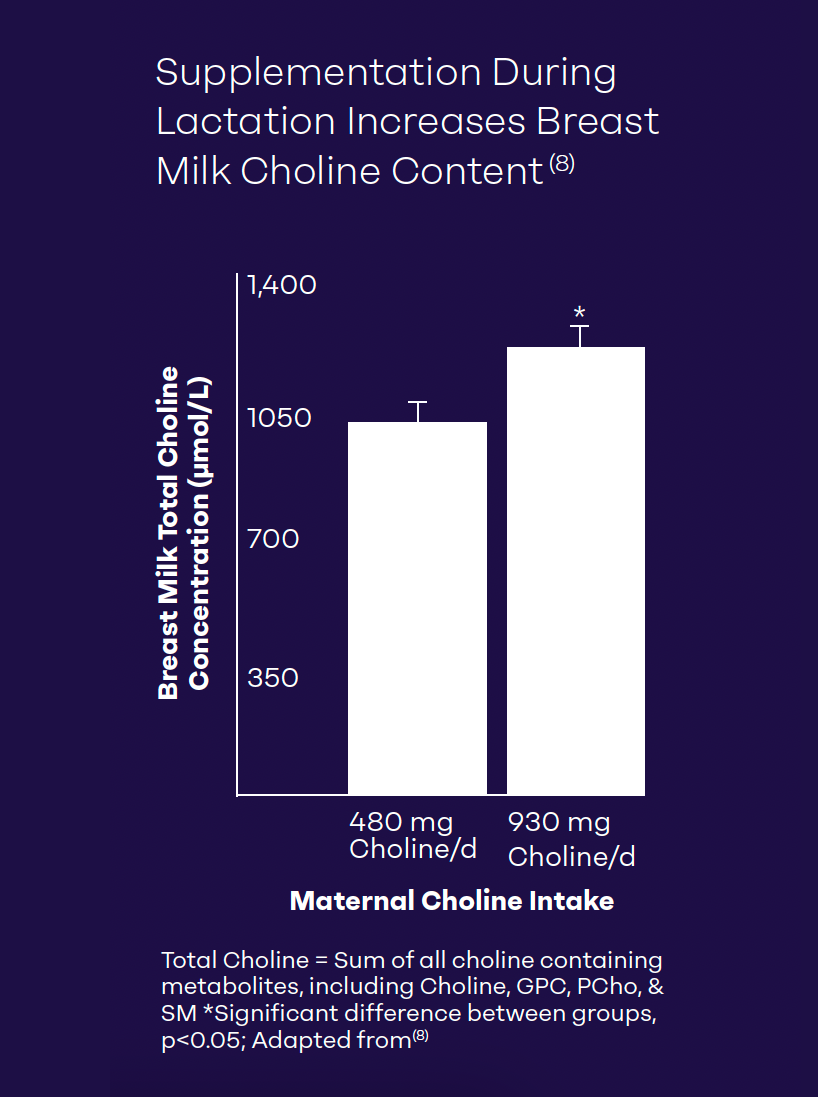 Choline is an essential nutrient for all ages and stages of life.
Choline is an essential nutrient for all ages and stages of life.
For women, the requirement for choline increases significantly during pregnancy and lactation.1 Adequate intake of choline during pregnancy & lactation helps to both replenish maternal stores and support the growth and development of baby’s brain and spinal cord.2 Despite its importance, few pregnant or lactating women are meeting their needs for choline.3 Expecting mothers may want to consider adding a choline supplement to their diet.
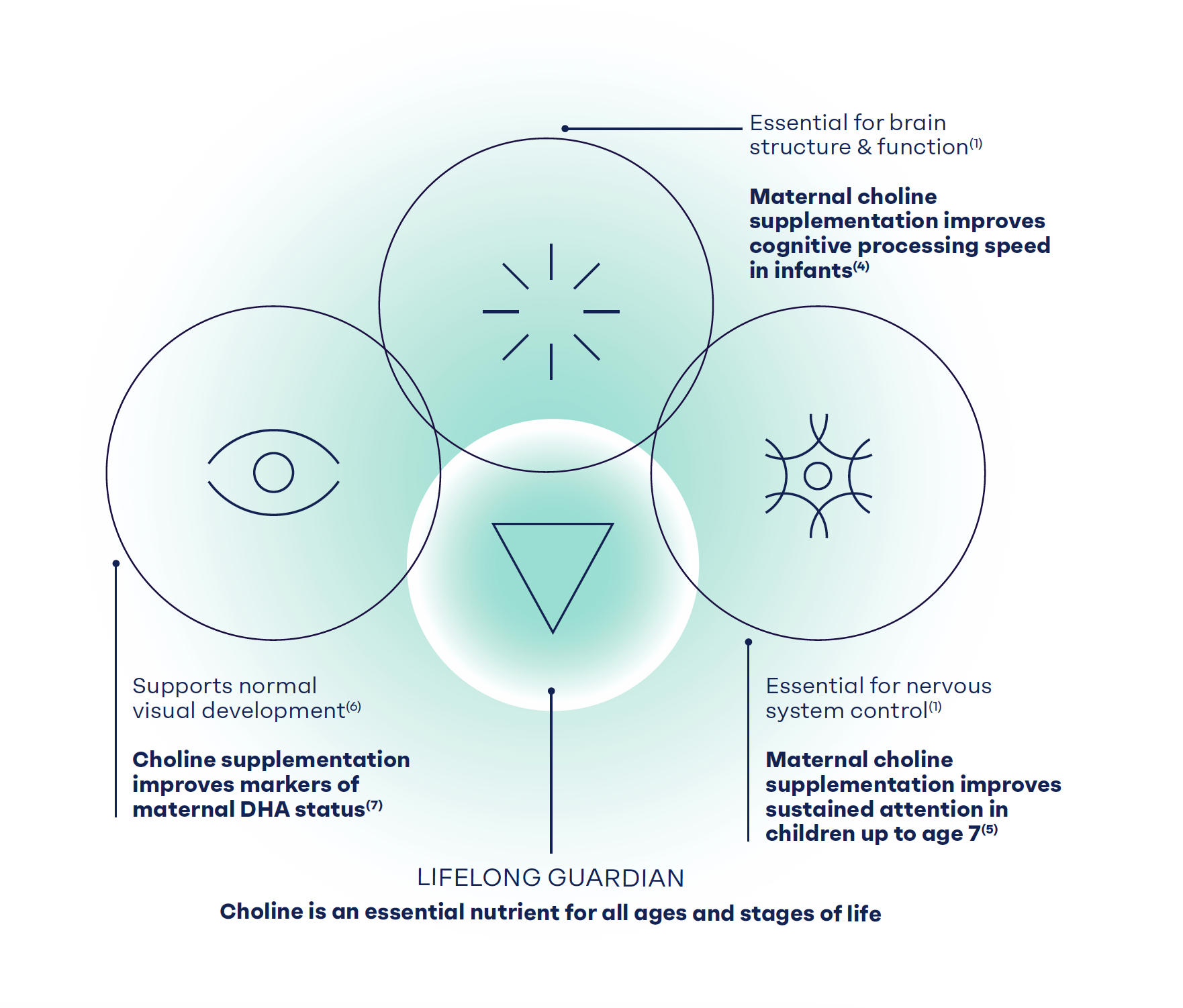

Less than 5% of pregnant or lactating women in the United States get enough choline in their diet from foods and beverages alone.3
Choline Containing Foods:
High amounts are only found in animal pro-ducts like beef, eggs, chicken, and canned salmon; vegetables, like Brussels sprouts, contain some choline. Just 6% of American women get enough choline in their diet from foods and beverages alone9, with even fewer getting enough choline during pregnancy and lactation.3
Supplements:
Experts caution that many prenatal supplements do not contain adequate amounts of choline.2 Consider adding a separate stand-alone supplement to increase your choline intake to at least 550 mg/day to support your needs during pregnancy and lactation to help support baby’s brain growth and development.
Fortified Foods:
Choline fortified foods, like yogurts and milk, are great options to help you increase your intake of this essential nutrient.

Balchem is the only North American producer of human grade choline, with manufacturing sites in USA and Italy.
Contact us and learn more: www.vitacholine.com
References:
1. Institute of Medicine, 1998.
3. USDA, Agricultural Research Service, 2021. Usual Nutrient Intake from Food and Beverages, by Preg-nancy/ Lactation Status, What We Eat in America, NHANES 2015-2018. Available at: www.ars.usda.gov/nea/bhnrc/fsrgARS data.
4. Caudill MA, et al., FASEB J 2018; 32(4): 2172-2180.
5. Bahnfleth CL, et al., FASEB J 2022; 36(1): e22054.
6. Trujillo-Gonzalez I, et al., FASEB J 2019; 33(8): 9194-9209.
7. Klatt KC, et al., Am J Clin Nutr 2022; 116(3): 820-832.
8. Davenport C, et al., J Nutr Biochem 2015; 26(9): 903-911.
9. USDA, Agricultural Research Service, 2021. Usual Nutrient Intake from Food and Beverages, by Gender and Age, What We Eat in America, NHANES 2015-2018. Available at: www.ars.usda.gov/nea/bhnrc/fsrg
This information is intended for industry professionals or customers of dietary ingredients, not consumers. Any explicit or implied claims included in this presentation may not necessarily be appropriate for marketing purposes and customers are responsible for their own compliance with relevant legal and regulatory requirements. These statements have not been evaluated by the US Food and Drug Administration. These products are not intended to diagnose, treat, cure, or prevent any disease.
